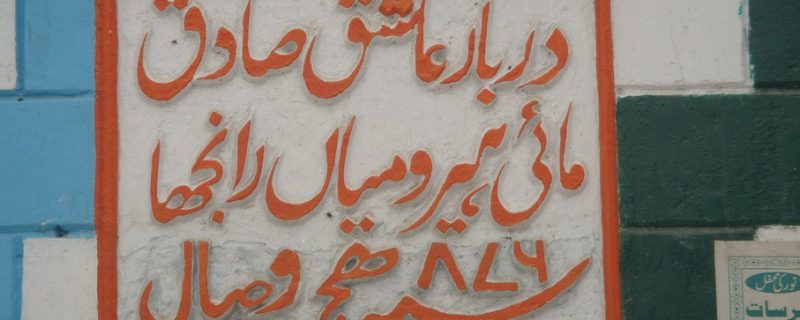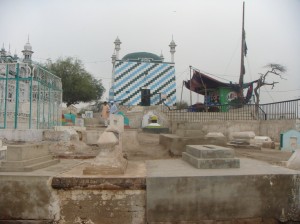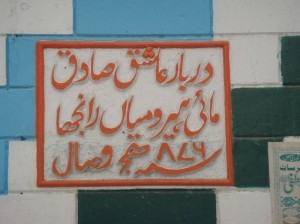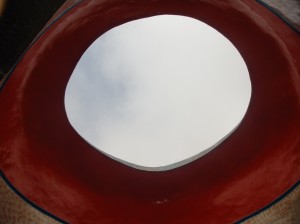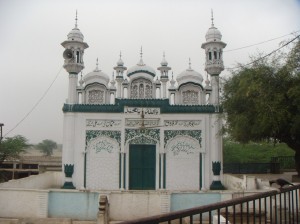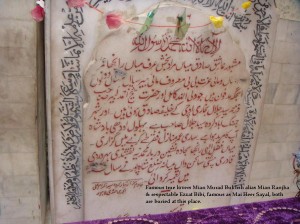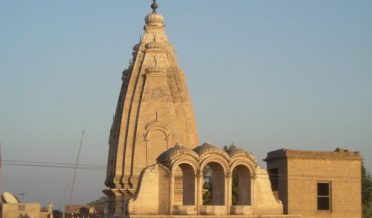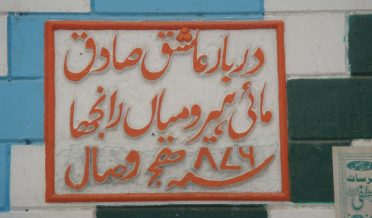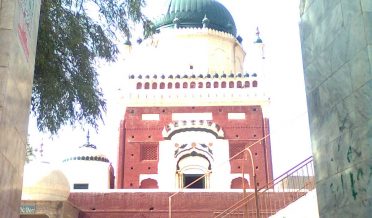Location: Jhang District, Punjab
Description: Jhang – Tomb Of Heer & Ranjha (Died 1471 AD – A Mosque Beside The Tomb)
The heroine of the famous love story, Heer Ranjha, Heer’s tomb lies just north of Jhang on the way to Faisalabad. An annual fair is held at her tomb. A comprehensive account of her story is told by Waris Shah in his book. And after this Waris Shah admit that it was a fantasy and nothing more.
Lovers Land
Of all the folk tales of Punjab, Waris Shahâs Heer is the most widely read, recited (actually, sung), commented upon and quoted love story. People have even done Ph.Ds on it. It is a very long poem, written in the Punjabi baint meter, comprising of 630 odd stanzas of 6 to 12 or more lines each. Syed Waris Shah wrote it sometime in the 1760s.Rural folks in Punjab routinely gather, as they always did, at the end of a hard dayâs work, under a tree or a chappar (thatched canopy) to smoke hukka and discuss and share the daily news, views and common problems. It is not uncommon at such gatherings for someone to sing a few passages from Heer. Folks listen to it, mesmerized both by the melody and its contents. Older people would often quote a line or two from Waris Shahâs Heer as a piece of wisdom in their conversations. In fact, Heer is quoted by the rural folks more often than any other traditional book of wisdom.The story of Heer and Ranjha, like all such stories, is partly true and partly fiction. But it continues to have such a powerful hold on the imagination of rural folks that they want to believe it to be true.Numerous people have written the story of Heer before and after Waris Shah, the earliest being Damodar and probably the latest being Ustad Daman. But it is only Waris Shahâs Heer that the world knows about â or cares to know about. By writing Heer, Waris Shah not only told a fascinating story but also raised the status of Punjabi from that of a rustic language, which was mostly a spoken language, to that of a language of literature. Many believe Waris Shah is to Punjabi what Chaucer and Shakespeare were to English or Saâdi was to Persian.Waris Shah was born in a village in district Sheikhupura but studied at Kasur.
He was a contemporary of Bulleh Shah and they are supposed to have studied at the same madrassah (not necessarily in the same class) under the tutorship of one Hafiz Ghulam Murtaza Makhdumi Kasuri.Waris Shah by all accounts was a spiritual man, well versed in Islamic theology, but he was more of a mystic than a âmaulviâ. In fact, going through his Heer one cannot help but wonder if Waris Shah were alive today would he be able to, or allowed to, write a daring epic like Heer?He wrote the story while staying at the hujra (quarters) attached to a little mosque in village Malka Hans, which falls in district Pak-Pattan (old district Sahiwal). The mosque (picture below) exists even today.It is said when Waris Shah completed Heer he showed it to his teacher. The latter was rather disappointed to see his talented student, instead of writing something on fiqh or shariah, had chosen to write a love story. He is reported to have said:âWarsa (deflection of the name, often used in Punjabi to address juniors in age or rank), I am saddened to see that my efforts have gone waste. I taught both you and Bulleh Shah. He ended up playing the sarangi (a string instrument) and you have come up with this.âWaris Shah then opened the book and started reciting Heer. As the teacher listened, the words slowly st arted sinking in. He was so touched by the language, the poetry, the powerful imagery, the intensity of emotions, and the melody that he is famously reported to have said,âWah! Waris Shah, you have strung together precious pearls in a twine of âmunjâ (a coarse string of hemp or jute).â






